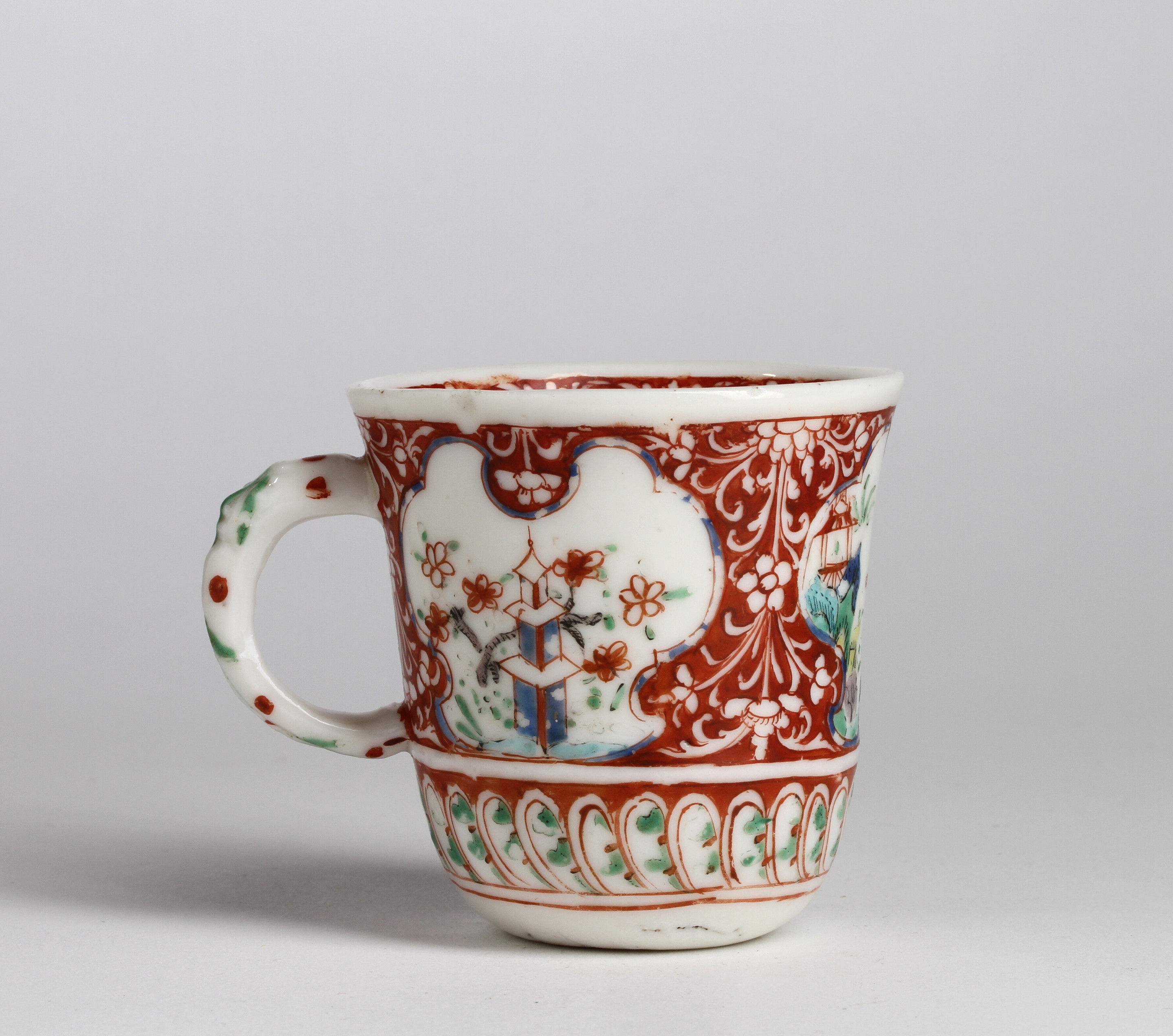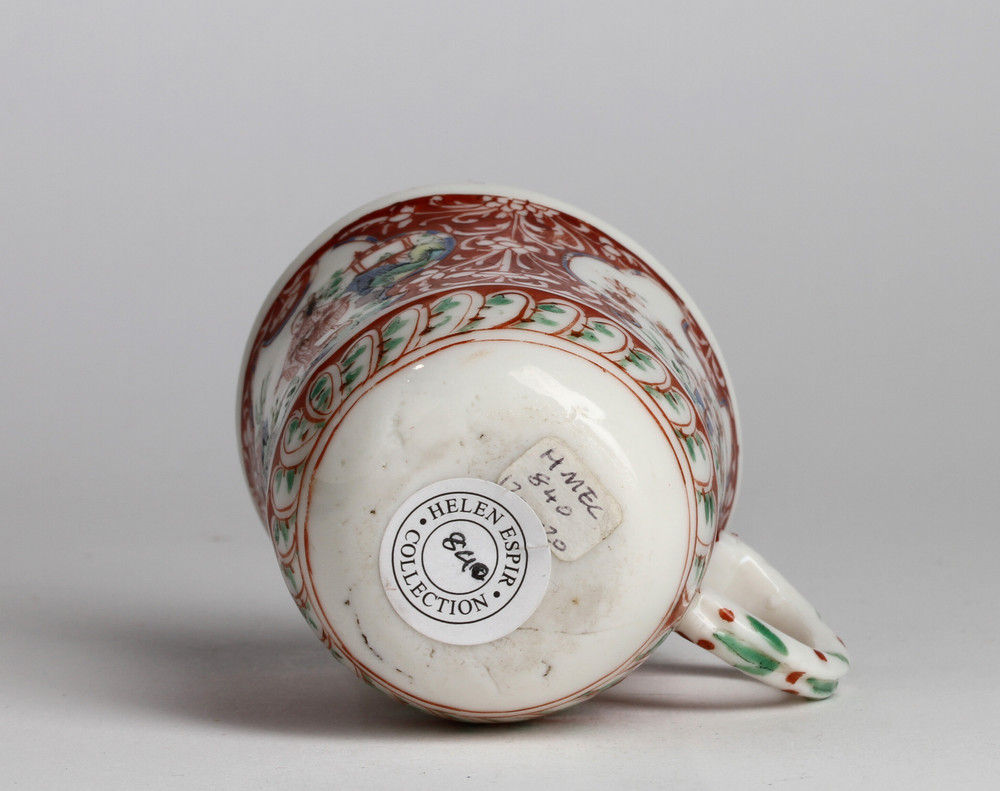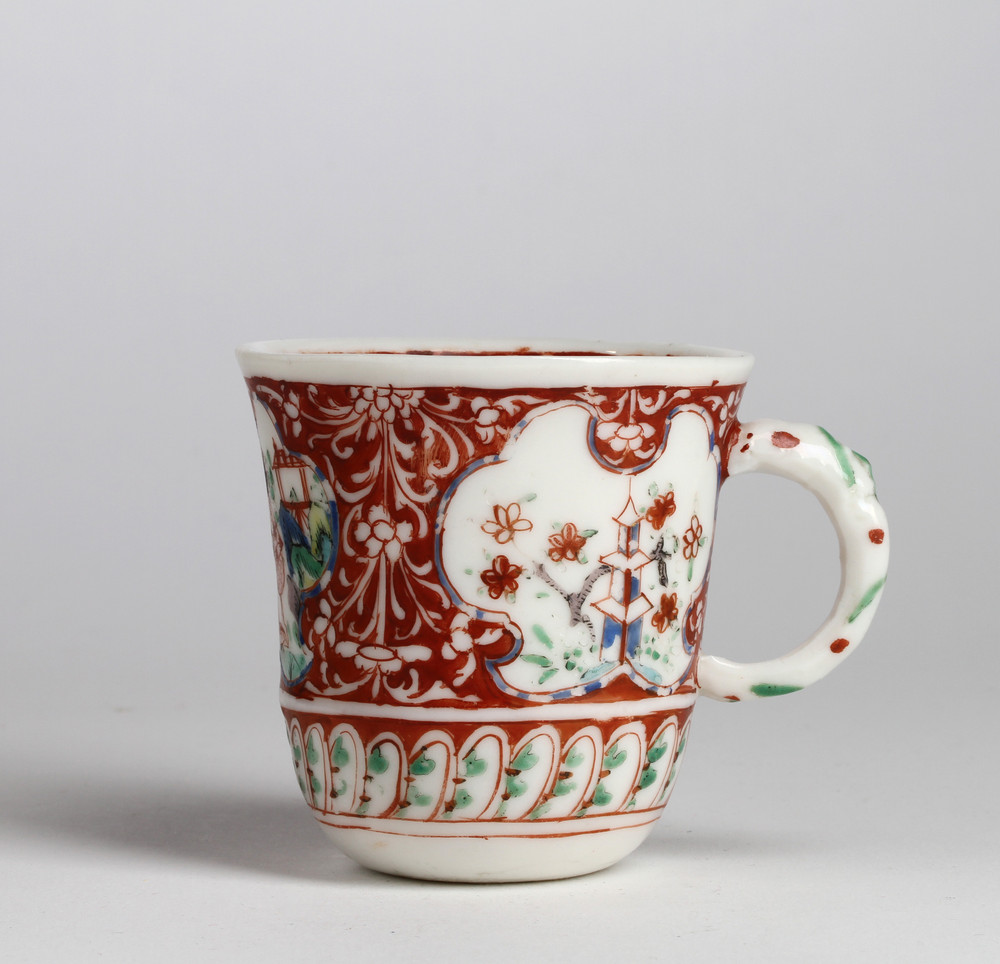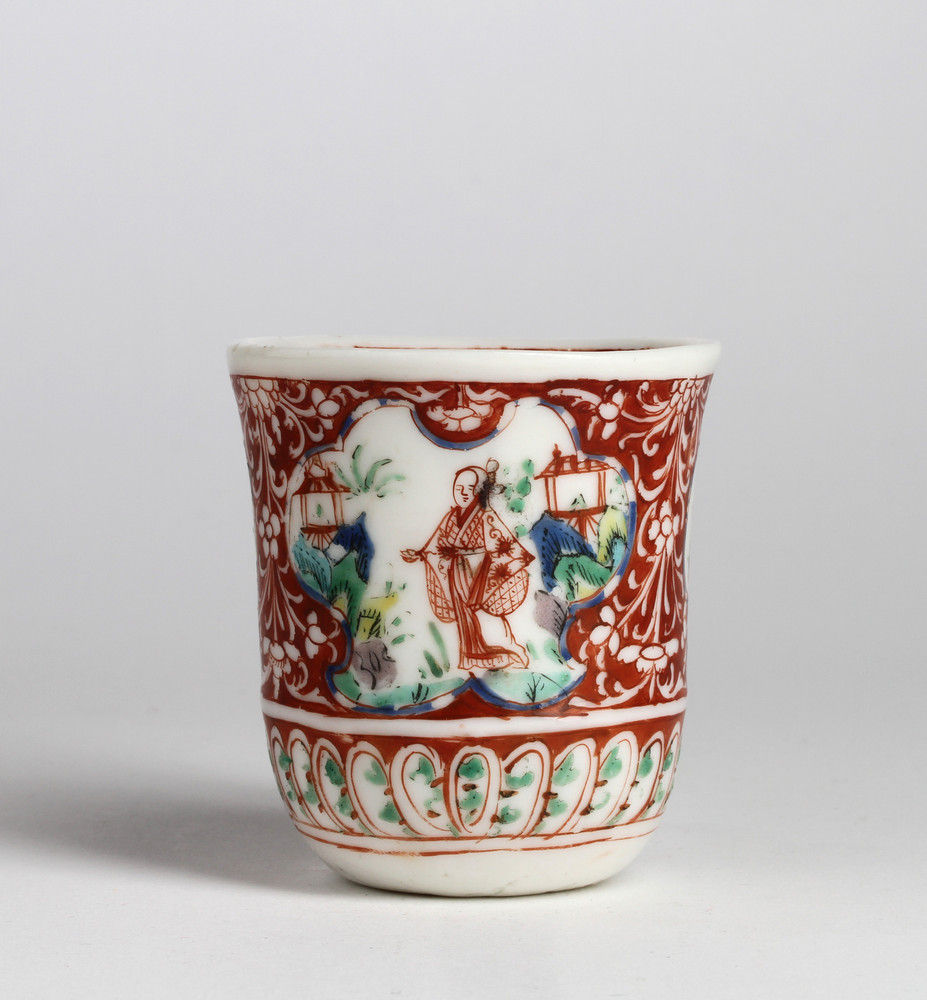A London-decorated Chinese blanc de chine ‘Capuchin’ cup
The porcelain 1690-1710, the decoration 1700 – 1720
Height – 6.3 cm
This shape of small cup often called a ‘capuchin’ is one of around six shapes found in blanc de chine porcelain of Dehua, China, that derive from uniquely English shapes and would have been specially commissioned by the merchants of the English East India Company trading out of Amoy, modern day Xiamen. The name capuchin is said to derive from the rib around the cup which recalls the belt around the waist of a Capuchin friar. The lower band of lappets simulate the raised gadrooned decoration found on the silver originals of this form.
This is an example of the earliest English decoration on white porcelain. the very first London enamelling occurred on brown stonewares of the Elers brothers and Fulham which required opaque colours to stand out against that ground. These related but more translucent colours were then adapted for white porcelain.[i] This early cup displays a palette including a blue that is susceptible to flaking and touches of an aubergine enamel typical of English decoration.
Helen Espir has shown that the Japanese figures in the cartouches are taken from A. Montanus, Atlas Japannensis, probably from the English translation by John Ogilvy of 1670.[ii]
Condition:
Shallow chip to rim
Provenance:
Helen Espir Collection
Literature:
Manners 2005
Errol Manners, ‘The English Decoration of Oriental Porcelain: Some overlooked groups1700-1750’, English Ceramic Circle Transactions, , vol 19, part 1, 2005, fig 21.
Espir 2005
Helen Espir, European Decoration on Oriental Porcelain, 1700-1830, 2005, p. 212, fig 11
Manners 2024
E & H Manners, ‘Decorators of Glass and Ceramics, no. 55
£1,950.00

——————————————————————————————————————————————————————————————————————–
[i] See Manners 2005 for a detailed discussion.
[ii] Espir 2005, p. 142 fig. 40





